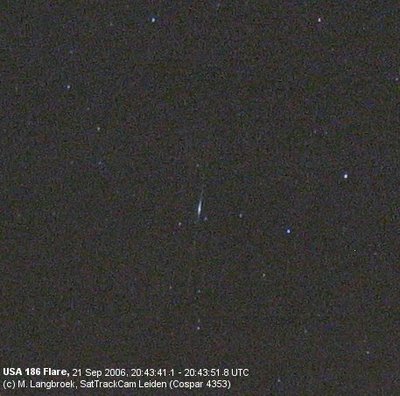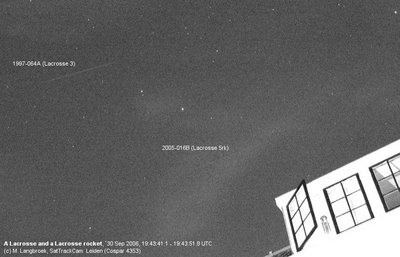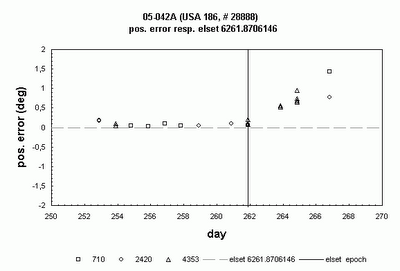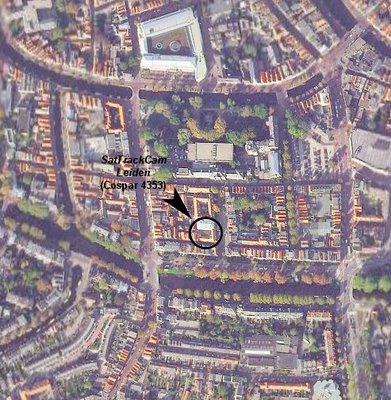Yesterday evening at the 20:44 UTC pass I was treated to two nice flares by KH-12
Keyhole USA 186 (2005-042A, #28888). Both flares happened while the camera was open (on two consecutive images). The second flare at 20:44:43 +/- 2s UTC amidst the stars of Ursa minor was brilliant, reached magnitude -2 and took over 10 seconds. The result was the fine photograph below:

(click image for larger version)
The earlier flare ( a glint rather) was near the zenith and a short one, reaching magnitude +1 at 20:43:46 +/-2s UTC with a duration of less than a second.

(click image for larger version)
The positions obtained from the photographs suggest USA 186 (05-042A) appeared 1.8 sec early and 0.06 deg off-track relative to elset 06261.87061463.
I almost lost these two observations! I was busy with answering fireball reports pouring in on a bright almost-daylight fireball that appeared at 17:35 UTC and in doing so lost track on the time. So at 20:42 UTC I suddenly realised a USA 186 pass was imminent at 20:44 UTC! I jammed open the window, slammed the camera tripod on the courtyard, slammed the camera n it and got two very lucky shots...!
I have two older observation runs to report as well.
On Sept 20 I catched a faint trail of USA 186, as well as a bright trail of Lacrossse 2 (1991-017A, #21147).
On Sept 18th I observed two other short glints of USA 186, one of which was photographed:
* 21:10:12 ± 2s UTC very short, mag. -1. Caught on photo, flare appears near-stellar
* 21:10:35 ± 2s UTC again very short, mag. +0.5
On the photograph with the 21:10:12 UTC flare, the trail is very faint pre- and post-flare. I obtained one position (endpoint of the trail seemed defined enough to measure).






